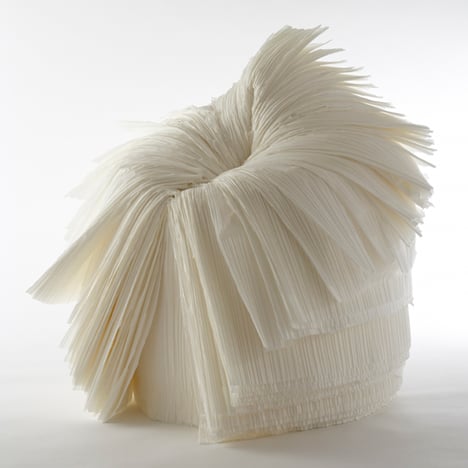
Dezeen's A-Zdvent calendar: Cabbage Chair by Nendo
C in our A-Zdvent calendar is for the Cabbage Chair by Japanese design studio Nendo, made using layers of waste paper from the fabric-pleating industry.
Nendo founder Oki Sato first created the chair in 2008 for an exhibition curated by fashion designer Issey Miyake, titled XXIst Century Man.
Dezeen Book of Interviews: Oki Sato features in our new book, which is on sale now
Miyake asked Sato and his Tokyo-based team to come up with a design for a seat using paper wasted during the process of forming pleats in garments, which are a signature of the fashion designer's work.
The paper is used to cover the fabric on both sides while it is put through an industrial pleating machine and comes out folded in the same way as the textile.
To create the Cabbage Chair, the crinkled paper was rolled into a cylinder and cut from the central point on top to halfway down its length.
Layers of the material were then peeled back one by one and left to rest on top of each other until they are all unfurled.
This results in an indented centre and raised portion behind, creating the seat and back of the chair.
Resins added to the paper during its original production make the material stronger and help it to keep its shape once unfolded.
As it requires no nails or screws for assembly, Nendo imagined that it could be shipped as a roll then sliced and peeled by the user.
Miyake named the chair for the resemblance that its layers have to the leaves of a cabbage.
Despite sustainable credentials of recycled material and minimal packaging requirements, the chair never made it into production. Some later versions were created as limited editions using unwoven fabric.